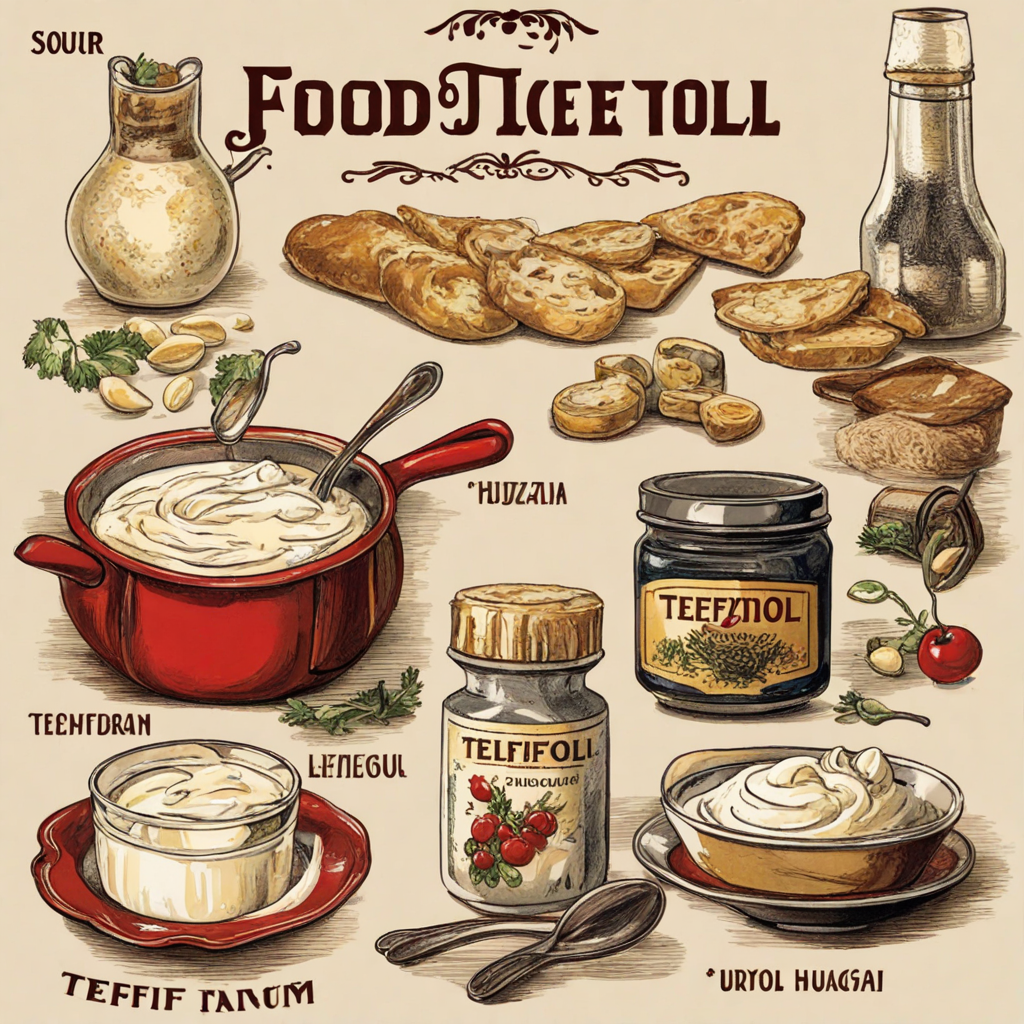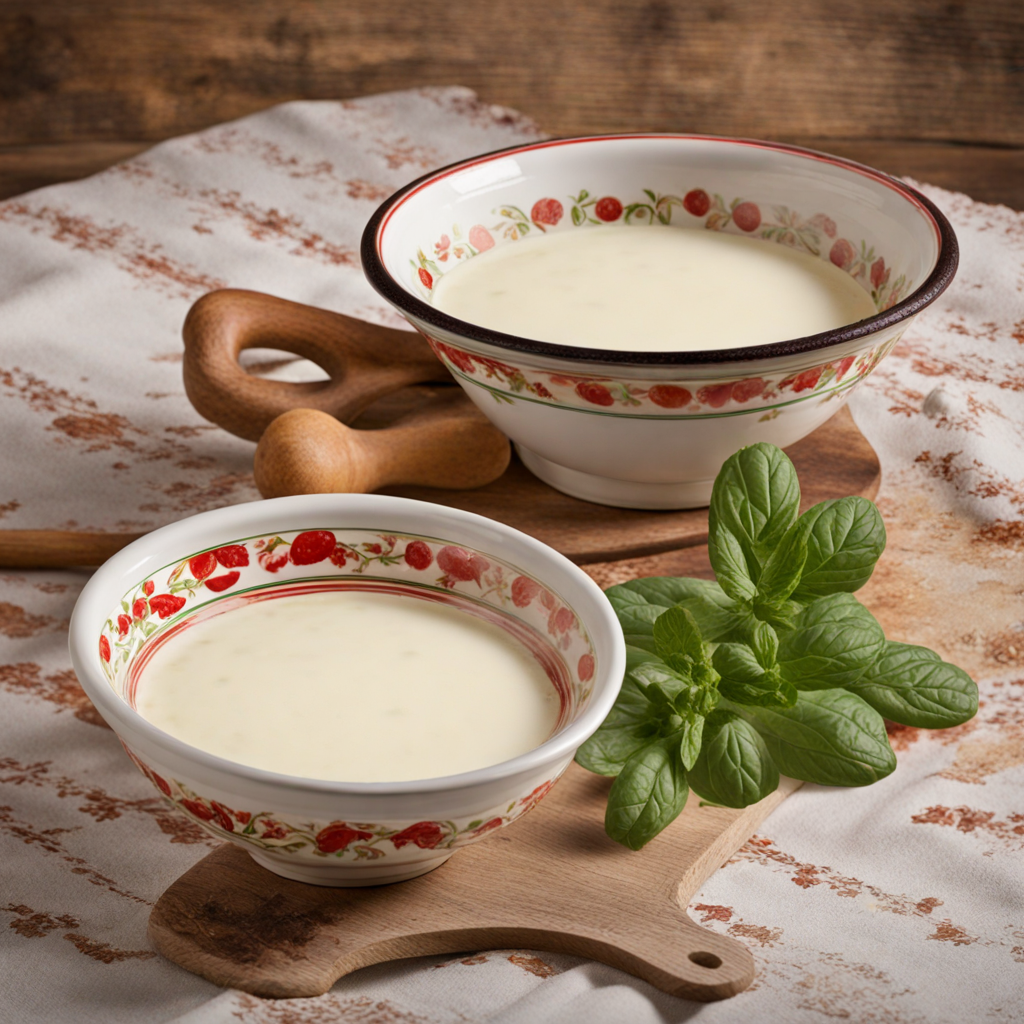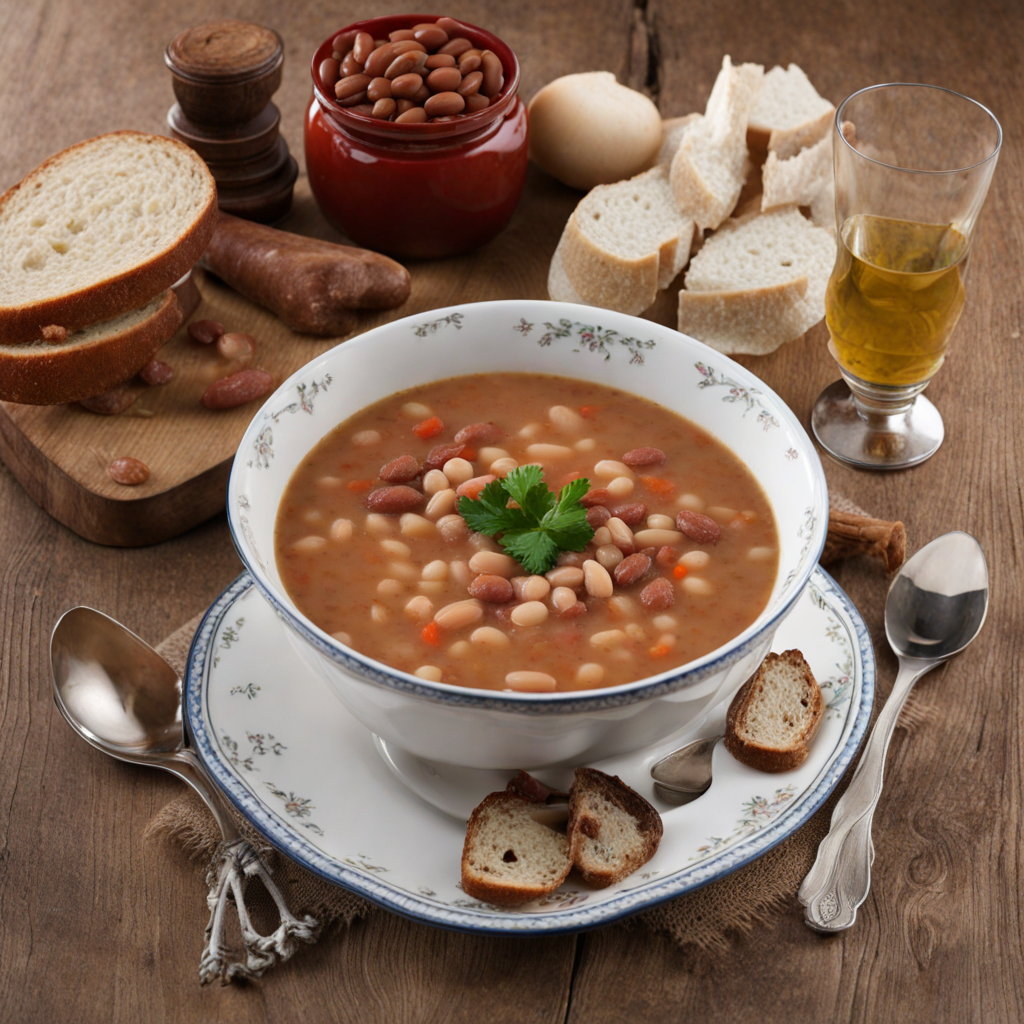Tejföl
Tejföl is a unique and creamy sour cream that holds a special place in Hungarian cuisine. With its rich, velvety texture, tejföl is made from fermented cream, giving it a distinctive tangy flavor that beautifully complements a variety of dishes. The creaminess of tejföl is similar to that of crème fraîche but with a sharper taste, making it an essential ingredient in many traditional Hungarian recipes. It adds depth and richness to soups, stews, and sauces, enhancing the overall flavor profile of the meal. One of the most popular uses of tejföl is in the classic Hungarian dish, gulyás, where it serves as a finishing touch, lending a creamy contrast to the savory, spiced broth. It is also commonly dolloped over hearty dishes like lángos, a deep-fried flatbread, or used as a base for dips and spreads, mixing perfectly with fresh herbs and spices. The versatility of tejföl allows it to shine in both savory and sweet applications, such as in desserts where it can be combined with fruits or used as a topping for pastries. For those looking to explore tejföl, tasting it straight from the container is highly recommended to appreciate its tartness and creamy texture. When paired with traditional Hungarian bread or alongside pickled vegetables, it creates a delightful balance of flavors. Whether you are drizzling it over a warm bowl of soup or mixing it into a fresh salad, tejföl is sure to introduce your palate to the delicious and comforting essence of Hungarian cuisine.
How It Became This Dish
Tejföl: A Creamy Pinnacle of Hungarian Culinary Heritage #### Origins of Tejföl Tejföl, the quintessential sour cream of Hungary, is more than just a dairy product; it embodies the flavors, traditions, and agricultural practices of the region. The term "tejföl" itself translates to "milk fat" in Hungarian, reflecting its creamy consistency and rich flavor. This fermented dairy product has its roots deeply embedded in the history of Hungarian cuisine, dating back to the nomadic pastoralist cultures that roamed the Carpathian Basin. The history of tejföl can be traced back to ancient times when early Hungarians, who were primarily herdsmen, began to experiment with milk preservation methods. The fermentation of milk was a practical solution to prolong its shelf life, especially in a landscape where fresh produce could be scarce during harsh winters. The natural bacterial cultures present in the environment played a crucial role in transforming fresh milk into a tangy, thick, and velvety sour cream that would eventually evolve into the tejföl we know today. #### Cultural Significance Tejföl occupies a prestigious place in Hungarian cuisine, often regarded as a staple ingredient that enhances a variety of traditional dishes. Its significance transcends mere culinary use; it is woven into the fabric of Hungarian culture and identity. Tejföl is not just a condiment; it is a symbol of home-cooked meals, family gatherings, and festive occasions. One of the most celebrated uses of tejföl is in the preparation of traditional dishes such as "gulyás" (goulash), "töltött káposzta" (stuffed cabbage), and "pörkölt" (stew). In these dishes, tejföl serves as a cooling counterpoint to the rich and spicy flavors, adding creaminess and depth. It is also used as a base for sauces, a topping for soups, and a component in many desserts, demonstrating its versatility across the culinary spectrum. In addition to its role in everyday cooking, tejföl is also associated with various Hungarian rituals and celebrations. During festive seasons, such as Christmas, tejföl is often served alongside traditional fare, reinforcing its status as a beloved culinary tradition. Its presence at the table is a reminder of the importance of dairy farming in rural Hungarian life and the deep connection between the land, its people, and their food. #### Development Over Time As Hungary evolved from a nomadic society to a more settled agricultural community, the methods of producing tejföl became more refined. The introduction of dairy farming techniques, particularly in the 19th century, allowed for increased production and standardization of tejföl. Farmers began to cultivate specific strains of bacteria, resulting in distinct flavors and textures that varied by region. The growth of the dairy industry in Hungary during the Austro-Hungarian Empire (1867-1918) further propelled tejföl into the national consciousness. The empire’s vast network of trade facilitated the distribution of dairy products, allowing tejföl to become more accessible to urban populations. It was during this period that tejföl began to gain recognition beyond Hungary's borders, influencing neighboring cuisines and being embraced by culinary enthusiasts worldwide. The 20th century brought significant changes to the production and consumption of tejföl. The rise of industrialization led to the mass production of dairy products, including tejföl. While this allowed for greater accessibility, it also sparked a movement towards artisanal production. Many Hungarian families began to return to traditional methods of making tejföl, valuing the quality and flavor of homemade versions over their commercial counterparts. In contemporary Hungary, tejföl has not lost its cultural significance. It remains a staple in households and is often featured in restaurants, where chefs take pride in using high-quality, locally sourced ingredients. The product has diversified as well, with variations such as "light" tejföl and flavored options emerging to cater to changing consumer preferences. However, the classic sour cream retains its place at the heart of Hungarian cuisine, cherished for its authentic taste and connection to the country's agricultural heritage. #### Tejföl in Modern Cuisine The modern culinary scene in Hungary continues to celebrate tejföl, but with a renewed emphasis on sustainability and local farming. Chefs are increasingly collaborating with local dairy producers to create high-quality tejföl that reflects the terroir of Hungary. This focus on regionality has led to a resurgence of interest in traditional recipes and cooking methods, ensuring that tejföl remains an integral part of the Hungarian culinary narrative. Moreover, tejföl has found its way into contemporary fusion cuisine. Chefs are experimenting with tejföl in innovative ways, incorporating it into dishes that blend traditional Hungarian flavors with international influences. For instance, you might find tejföl used in gourmet appetizers, layered in pastries, or as a component of modern salads, showcasing its adaptability and appeal to a broader audience. #### Conclusion Tejföl is not merely a food item; it is a living testament to Hungary's rich culinary heritage. From its origins in ancient pastoral practices to its revered status in modern kitchens, tejföl has evolved while remaining deeply rooted in Hungarian culture. As a symbol of comfort and tradition, tejföl continues to bring people together, bridging the past with the present and ensuring its place in the future of Hungarian cuisine. In a world that often seeks the new and novel, tejföl stands as a reminder of the beauty found in simplicity and tradition. Whether dolloped on a bowl of soup, swirled into a savory stew, or enjoyed fresh with bread, tejföl encapsulates the essence of Hungary—a land rich in history, flavor, and a deep connection to its culinary roots.
You may like
Discover local flavors from Hungary







